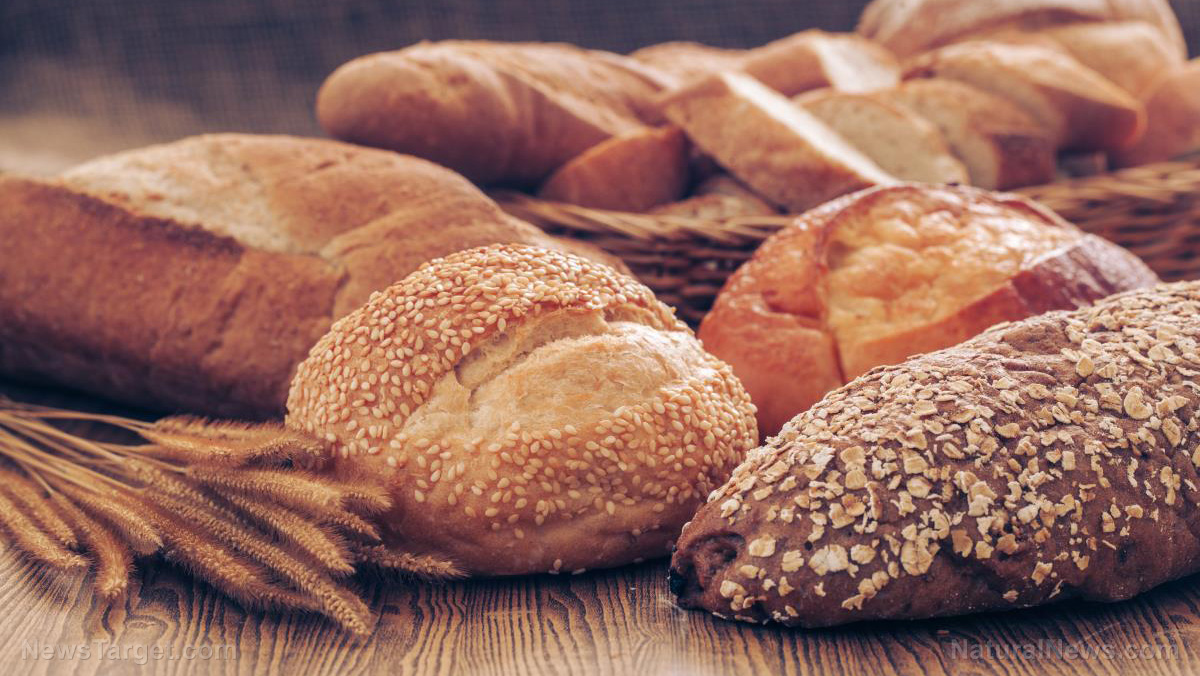
Advertisement
Sourdough bread is slow-fermented bread made with a live fermented culture called a sourdough starter. As a natural leavening agent, sourdough starter causes the dough to rise and gives sourdough bread its characteristic sour taste and slightly chewy texture.
Why eat sourdough bread
Sourdough bread is a popular survival food because it’s filling, tasty and nutritious. Plus, you only need flour, salt and water to bake it. These long-lasting ingredients are readily available and easy to store.
In terms of its nutrient content, sourdough bread is lower in gluten than regular white bread made with commercial yeast. It does not cause your blood sugar levels to rise as much as the latter does. And while it has the same nutritional profile as its regular counterpart, the nutrients in sourdough bread are much easier to absorb.
That’s because sourdough fermentation degrades large amounts of phytic acid, an anti-nutrient that inhibits the proper absorption of minerals like magnesium and zinc. A study found that sourdough fermentation reduces the phytate content of bread by 62 to nearly 90 percent. Meanwhile, yeast fermentation lowers phytate levels by only 38 to 40 percent. Other studies show that sourdough fermentation also increases the amount of antioxidants and folate in sourdough bread.
Simple sourdough starter recipe
When you make a sourdough starter, wild yeast combines with friendly bacteria like Lactobacilli to ferment the sugars in the flour. This makes the starter smell yeasty, earthy and a bit sour.
Ingredients:
- 1 cup flour
- 1/2 cup lukewarm water
Instructions:
It takes a couple of days to make a basic sourdough starter since the sugars in the flour take a long time to ferment. This helps break down gluten, making it more digestible and easy to absorb when you eat sourdough bread.
Step 1
-
Combine the flour and water in a crock or glass container. The container should be big enough because a sourdough starter needs room to grow.
-
Stir well to ensure that the flour is fully dissolved in the water.
-
Cover your container and allow it to sit at room temperature, or approximately 70 F, for one day.
Step 2
-
Check your starter the next day to see if it has grown. Remove half of it and throw it out.
- Add a cup of flour and half a cup of lukewarm water to feed your starter and keep the yeast and bacteria nourished. Mix your starter well, cover loosely with a cloth and let it sit at room temperature for another day.
Step 3
-
Your sourdough starter should have some bubbles and smell slightly fruity by this time. From this day onward, feed your starter twice a day at approximately the same time every day.
-
Stir your starter, remove 1/2 cup of it and toss this out. Add a cup of flour and half a cup of lukewarm water to the starter. Mix well and let your starter sit for 12 hours.
-
Repeat the same thing later in the day.
Step 4
- Repeat yesterday’s steps.
Step 5
- Your starter should be at least twice its size by this time. It should smell tangy but not too strong and may have some bubbles. Repeat yesterday’s steps until it’s twice its size. This may take 7 to 10 days.
- Once your starter is twice its size, proceed to the last step.
Step 6
-
Remove all but half a cup of your starter and feed it with a cup of flour and half a cup of lukewarm water. Allow it to sit at room temperature for 6 to 8 hours. You should see a lot of bubbles afterward.
-
You can now use your starter to bake sourdough bread. Take only the amount you need and always leave half a cup for future use. Store this unused starter in the refrigerator and feed it once a week.
How to bake sourdough bread
Baking sourdough bread should be easy once you have a sourdough starter. Just mix the ingredients, knead, bake in the oven and you’ll have delicious, homemade sourdough bread to eat at any time.
Ingredients:
- 4 cups flour
- 1 cup sourdough starter
- 2 teaspoons salt
- 1 1/4 cups water
- Stir the starter and combine all ingredients in a bowl. Knead for 10 minutes on low if you’re using a machine. If kneading by hand, knead for 20 minutes until the dough is stretchy but not sticky.
- Place the kneaded dough in a large floured bowl and sprinkle flour on top. Cover with a cloth or towel and let the dough rise for 12 hours.
- Place the risen dough on a floured board and knead for a few minutes. Transfer to a floured proofing basket or a medium bowl, then sprinkle flour and let it rise for 4 hours.
- Preheat oven to 480 F.
- Flip the dough onto some parchment paper and transfer the dough and paper to a large cast-iron dutch oven. Make shallow cuts into the top of the bread. Seal with the dutch oven’s lid and bake for 30 minutes.
- Take the lid off and bake for another 15 minutes or until the crust is golden brown.
- Transfer to a cooling rack and let it cool for an hour.
Sourdough bread is perfect for survival situations because it’s filling and nutritious and requires only shelf-stable ingredients. Follow the recipes detailed here to make your own sourdough starter and sourdough bread.
Sources:
Advertisements







